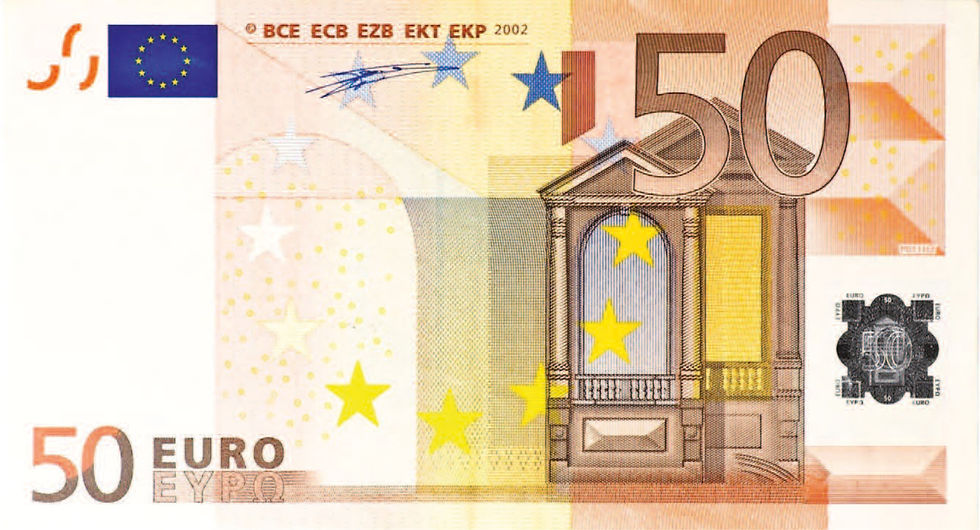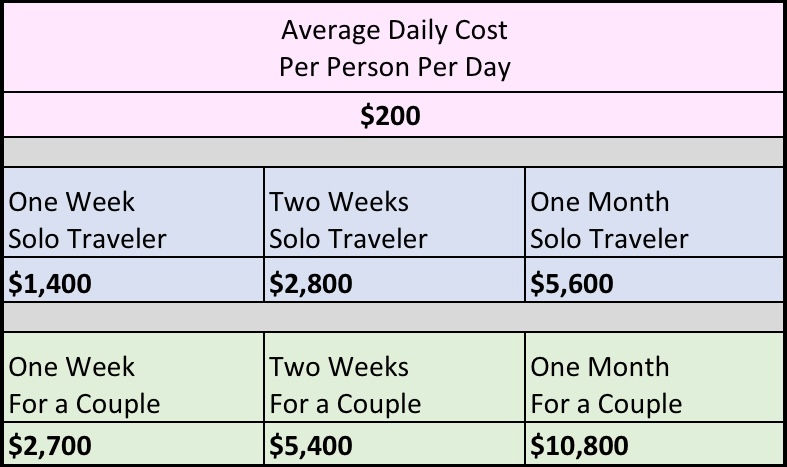Paris Trip Budgeting (gulp)... The Dollars & Cents (Euros & Sense) of it All!
- Parisian Niche

- May 20, 2022
- 5 min read

France (along with the rest of the 27 other countries that currently comprise the European Union) has been using the Euro as their daily currency as of January 01, 1999. Prior to this, France had used the French Franc.

While Euro bills may seem like just "pretty money," the notes were recently given a high tech design refresh (led by an independent Berlin based banknote designer, Reinhold Gerstetter). This new design offers enhanced security features to prevent counterfeit currency from circulation. Oh, and they're really pretty…
The colorful series of paper notes features artistic designs that reflect the "ages and styles" of Europe's famous architectural styles. Looking at the front side of a bill, the windows and doorways can be seen and represent the European sprit of openness and cooperation. Turn the note over to see the bridges, a metaphor of communications between the people of Europe and further, between Europe and the rest of the world.

The architectural designs of each paper bill of the Euro currency:
· €5: Classical
· €10: Romanesque
· €20: Gothic
· €50: Renaissance
· €100: Baroque / Rococo
· €200: 19th Century Iron & Glass
· €500: Modern 20th Century
And a wonderful visual of European architecture through the ages...

Euro coins come in denominations of: 1, 2, 5, 10, 20 and 50 cent, €1 and €2. Each coin displays a common side, and when flipped, a national side (the national side indicating the issuing country of that particular coin). Remember, there is no €1 bill... €1 comes as a coin.

Ok P’Nichers, this is the question at hand: How many Euros will you need for your Parisian adventure? Grab your calculator, list, patience, and a smile - let's get crunching!

Even before beginning to organize your budget, P'Niche recommends checking your home currency against the daily rate of the Euro and uses this free currency conversion tool:
You don't want to make an error thinking you have more than you do, so a few minutes of preplanning will be helpful!
As you prepare to spend on big ticket travel purchases, there are certainly some tips on savings leading up to "click to purchase" time. Here are just a few:

Ways to Save On / Up for your Paris Trip
· Book flights on points or Tuesdays
· Decide between hotel and apartment
· Travel off-season
· Use credit card with no exchange fee
· Research "free admission days"
· Utilize student / senior discounts
· Cancel unused subscriptions
· Convert cash currency before trip to save on exchange rates / fees
· Set up a specific amount to auto deposit from your paycheck to a travel savings account
· Try the $5 Challenge (see below)
· Ask for "travel gifts" (see below)

The $5 Challenge
Each time I receive a $5 bill as change, etc., it is placed into a special envelope. Down the line, the cash is deposited with a specific goal in mind. Typically, that goal is a trip to Paris. You'd be surprised how quickly this challenge can accumulate a sizeable savings for your adventure!

Travel Gifts
Asking for gifts for your trip to Paris can be a great way to save money (as well as letting others share in your excitement and travel anticipation). Some can even be great "stocking stuffers". A few ideas...
· Luggage or carry on
· Toiletries for your trip
· New Parisian chic clothes / pajamas
· New shoes for hitting Paris streets
· Museum pass
· Excursions, tours, classes
· Voucher for taxis to / from airports
or even offering you a ride!
· Child, pet, or plant care during trip
· Spa treatment in Paris (oui, please!)
· Packed snacks for the airport

Now, how much to budget each day?
Gather your total cash (or write down the amount) and divide by the # of days of your Paris trip.
NOW take into account the days you know you will spend more (for example, airport transfers, tours, or a shopping trip to the flea markets), and allot more funds for those days, as certainly more of your budget is going to be used.
To offset that extra spending, P'Niche likes to enjoy a simple picnic, street food, etc. that particular day.
If this system does not work for you, you can also simply work off of averages for a mid-range price trip. See details below...
If we imagine that you plan to spend around $200 USD per day on your trip, you'd calculate a total of $1400 for a week (note: this is for a solo traveler). Two people would likely add up at around $2800 for a week in Paris. Keep in mind, these numbers exclude airfare / accommodations - this is the overall average "mid-range" spend for food, beverage, Parisian transport, museum entries, excursions, tours, souvenirs, etc.
Let's break it down quite easily here:

Now, P’Niche hears your audible gasp at the sticker shock of these numbers, but keep in mind, this is for a “mid-range” trip. There are certainly ways to travel to Paris on a less expensive budget than you think. Food doesn't have to cost $100 per day. Also keep in mind, that while some travelers spend over $20 a day on taxis, as may befit their personal wishes or needs, you can get a full week’s pass on public transportation, for under $40, which works out to around $6 per day, for unlimited use of Paris’ extensive métro and bus system.
You can also begin a more in depth and expansive travel budget prep with the use of this comprehensive and user-friendly online tool.
The key to the success of any budgeting process is organization. P’Niche loves to organize (my label maker machine is a reliable friend) and prepare. We believe that as Anne Shirley from Anne of Green Gables so wisely said, “looking forward to things is half the pleasure of them.” Also, some smart prep ahead of time leads to a lot less drama down the road.

As you can see from this example, P’Niche makes two sets of “travel envelopes”. The first set corresponds to some non-airfare / non-lodging related expenses needed for Paris trips.
The second set corresponds to travel dates. Each day gets its own unique envelope, into which the daily spending maximum is added.
Now, here is the willpower part: once your day‘s cash (or set budget, if you use only credit cards) is gone, that’s it, no more spending on that day / evening. Contrary wise, any leftover funds roll into the next day’s envelope and so on. Any cash leftover at the end of a trip goes into a piggy bank for the next anticipated trip. Did someone say return to Paris?! Le sigh...
Ok, P'Nichers, are you ready to take on your budget arrangements for Paris? Let us know in the comments below, we are looking forward to hearing from you... à bientôt!




Totally agree with Anne, having something to look forward to is wonderful...how else can you get through the doldrums of life....a future trip to Paris! :) Love the petit lesson on the Euro bills...I've always thought they were pretty as well, but haven't taken the time to really have a good look, merci !
Love the travel tips and the information on the Euro! Great job Christina!
Very interesting! Loved the info about the Euro. I'm also trying to convert the calculator to Euro 😊as I'm European.